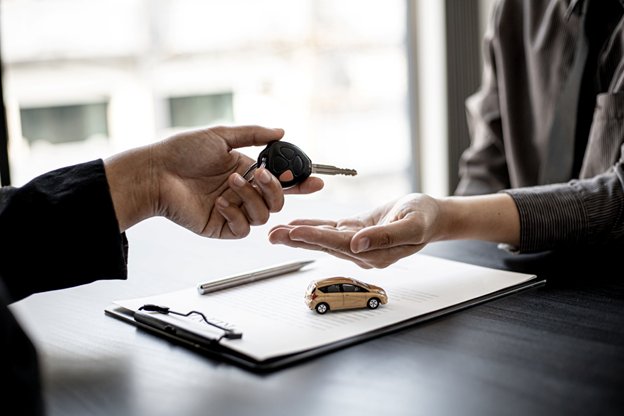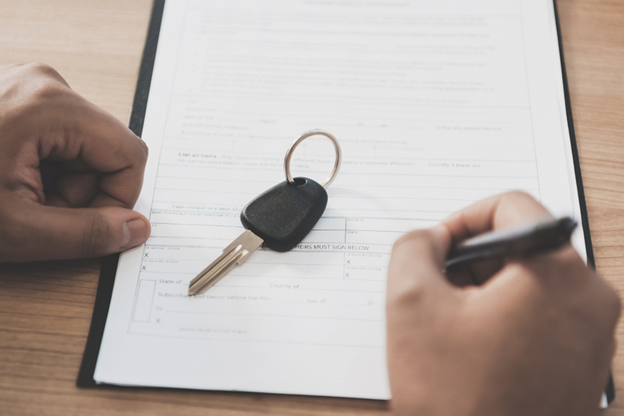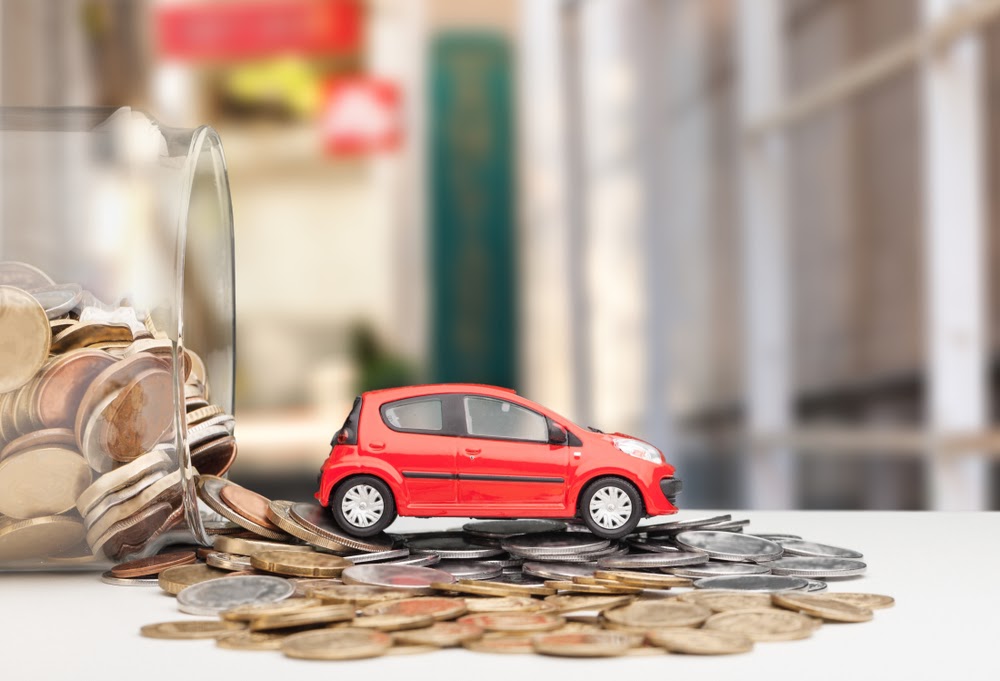A car title is an official document that serves as proof of ownership of a vehicle. Without this document, there is no way to prove you are the legal owner of the vehicle. Because of this, a car title is one of the most important documents you possess.
In addition to the legal owner’s name, a car title also includes other information about the vehicle. The information included on the title will vary slightly from state-to-state, but the vehicle identification number (VIN) is included on titles in all 50 states.
If the owner of a car changes, the title must be transferred to reflect this change in ownership. How does a title transfer work? Please see how to transfer car ownership.
When Will You Need to Transfer Car Ownership?
A car’s title must be transferred whenever the vehicle is bought or sold. This is true regardless of whether the car is purchased from a car dealer, family member, or private seller. The title must be transferred every time the car changes ownership regardless of the parties involved in the transaction.
The title must also be transferred even if no money is exchanged. For example, if you inherit a vehicle from someone, you will need to transfer the title to ensure it is in your name even though you didn’t technically purchase the vehicle.

How to Get Your Title to Start the Transfer
If you are selling your vehicle, the first thing you need to do is get your hands on your title so you can transfer it to the new owner.
If you don’t have a loan on your vehicle, the title should already be in your possession. A car title can be either a paper or electronic document. You only need one form or the other, not both, to complete a title transfer.
If an electronic title is not available and your paper title is lost or damaged, you may need to obtain a new title prior to completing the transfer. The process of getting a new title may vary from state-to-state. But in general, you will need to submit paperwork and pay a small fee to get a new title. Contact the Department of Motor Vehicles (DMV) in your state to find out what steps you will need to take to replace your lost or damaged title.
If you have a loan on your vehicle, you may not have the title in your possession. This is because most lenders hold onto the title of a vehicle until the loan has been completely paid off. Once the loan has been repaid, the lender typically sends the original title document to the borrower. If you are in this situation, you will need to contact your lender and arrange to pay the balance on your loan in order to get the title to your vehicle.
How Can You Transfer A Title?
The title transfer process will vary depending on whether the car is purchased from a dealer or private seller.
If you purchase a vehicle from a dealer, the dealer will typically handle all of the paperwork for you. All you will need to do is sign paperwork when you purchase the car. Then, the dealer will complete the title transfer and you will receive the title to your vehicle in the mail several weeks later.
Transferring a title is a bit more complex when you purchase a vehicle from a private seller. If it’s a private sale, the buyer and seller are responsible for completing the title transfer. To do this, the owner must sign the title and give you a bill of sale. This officially releases the seller as the owner of the vehicle.
The buyer must then take the signed title and bill of sale to the DMV to get a new title and registration in their name. The buyer may need to fill out additional paperwork and pay a title transfer fee at the DMV. The DMV will issue a temporary registration to the buyer at this time. The official title will be mailed to the buyer after the transfer has been processed.
Each state has its own laws governing title transfers, so the process may vary slightly depending on where you live. To make sure you follow the correct steps, it’s best to contact the DMV in your state to learn more about the title transfer process.

How to Transfer An Electronic Title
Remember, a title can either be a paper or electronic document. If the title is a paper document, follow the steps above to complete the transfer. If the title is electronic, the title transfer process might be slightly different. In this case, the seller may need to request a paper title from the DMV before they can initiate the transfer. Once they receive the paper document, they can follow the steps outlined above to transfer ownership of the vehicle.
In some states, the buyer and seller must go to the DMV together to complete a secure title reassignment for an electronic title. In these states, both parties involved in the transaction must be present to complete the transfer. Because the rules vary in every state, contact your local DMV to ensure you understand what needs to be done to complete an electronic title transfer.
How to Transfer A Title With Multiple Owners
A car title should list all of the legal owners of the vehicle. If a car is owned by more than one person, this means there will be more than one name listed on the title to the vehicle.
If you are purchasing a vehicle that is owned by more than one person, look at the way the names are listed on the title. The title may say “Owner A and Owner B” or “Owner A or Owner B.” If the title says “and” between the two names, this typically means both owners will need to sign the title before it is transferred. However, if the title says “or” between the two names, you usually only need a signature from one of the owners to transfer the title.

What Information Should You Verify When Transferring A Title?
If you are buying a vehicle, it’s important to review the information on a title to confirm it is accurate. Some of the key items you should verify on a title include:
- Double check the VIN. Every vehicle has a unique 17-character string of letters and numbers that is known as the VIN. Carefully review the VIN on the title to confirm it matches the VIN on the vehicle. You can find the VIN in the lower corner of the windshield where the windshield meets the dashboard on the driver’s side.
- Check the lien status. Make sure there is no lien on the title before you purchase the vehicle. You can check the lien status of a vehicle using its VIN. Either call your local DMV or visit their website to look up this information.
- Verify the owner’s identity. If you are buying a vehicle from a private seller, confirm that the person who is selling it to you is the person who is identified as the legal owner on the title. If the names don’t match, the seller might not be authorized to sell the vehicle.
Verifying this information will help you avoid delays or issues with your title transfer.


